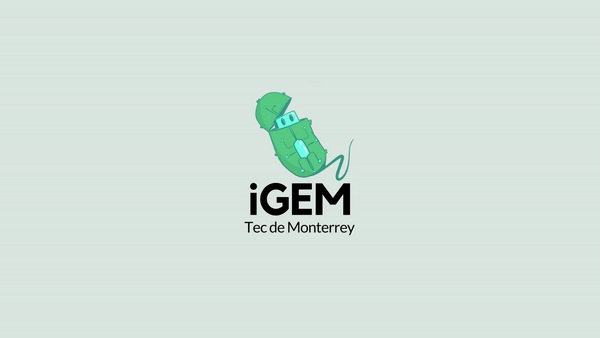
Previous Parts
For the correct mechanism of E-coding in sensing contaminants of the environment and integrating an analog message in the bacteria genome, previous parts found in the iGEM registry were used and optimized. This includes the SCRIBE system, previously characterized by iGEM Team UIUC 2015 (BBa_K1681001) based on the work of Lu and Farzadfard and the Pyear-GFP composite which express fluorescence in presence of nitrate ions (BBa_K381001).
SCRIBE(BsaI): BBa_K1681001
This part holds a single SCRIBE cassette induced by a lac operon. The cassette holds an editable retron sequence,the expression of a reverse transcriptase and a beta recombinase for DNA recombination into the bacteria's genomic DNA. iGEM Team UIUC did not include results regarding its specific parts, however, they did obtain successful recombination of a target DNA into the genome with a variant of this part with the same principle. From their work, as well as that from Farzadfard, a different design for this construct is proposed, where is it adapted for the implementation of Cas1 and Cas2 proteins, instead of a recombinase, for the integration of target DNA to the bacteria's genome.
Pyear-GFP composite: BBa_K381001
This part holds a cassette for the expression of GFP in the presence of nitrates. The original composite part consists of a promoter (Pyear) silenced by a protein NsrR, which is natively produced by Escherechia coli and a cassette for expression of a GFP. NsrR protein is inhibited by nitrate ions, so that in its presence the cassette expresses the GFP and fluorescence is observed. The problem from this construct is that under basal conditions without the presence of nitrate ions, there is leaking activity in the promoter which produces GFP. To solve this problem, a new cassette for the expression of NsrR was made to overexpress this inhibition factor and reduce the leaking activity in the promoter region.
Improved Parts
In the integration of a DNA spacer into bacteria's CRISPR loci by means of Cas1-Cas2 integrase activity, the target DNA sequence to be deliberately inserted must be produced. This sequence is generated following the same basis as the SCRIBE system: a reverse transcriptase that retrotranscribes a retron sequence. Improved Part BBa_K2761010 contains two promoters responsible for the production of this DNA message. For reading contaminants in water reservoirs, construct BBa_K2761011 was made to improve the expression of GFP by the Pyear promoter in basal conditions. This improvement helps in reducing background noise and leaking effects that are naturally found in this cassette.
Inducible message generator (RT/msr-msd): BBa_K2761010
Integrating a synthetic DNA sequence into the genome of a bacteria can be quite difficult. This problem was faced by IGEM team UIUC Illinois using the SCRIBE system. To improve this part a histidine tag was added to the retrotranscriptase of the system. Using this approach it is possible to determine whether or not there is a production of the retrotranscriptase. To visualize the protein, a Western Blot is necessary. This improvement would act as a mid-point to achieve integration. Once there is the presence of the protein, then it is possible to see its activity. If the activity is not seen, then its possible that the sequence or plegation of the protein may be damaged, not because it is not synthesized. Another improvement of this part is a double promoter sequence. The P-LacO promoter was kept for the synthesis of the retrotranscriptase but a T7 promoter was added to the msr-msd segment. The 7 promoter doesn’t produce a protein in the msr-msd sequence but makes it available for transcription factors. Having this double promoter is useful as a double regulation for the synthesis of the retron, which is the final product of this construct. When both promoters are active, it is expected to have a retrotranscriptase and a transcribed segment of msr-msd ready to be used by the retrotranscriptase as a template, in contrast to the previous part, where the whole system was active by just one promoter. The previous part can have interference in the mechanism of structure of proteins, as well as the message to be active for the retrotranscription.
Repression protein for PyeaR: BBa_K27610101
As part of the environmental perspective of our project, the need of an inducible promoter by nitrate ion was needed. The improve part, uses a segment of a reporter construct with GFP ligated to a new segment. The new segment overexpress NsrR protein to inhibit under no presence of nitrate the promoter region. This new segment is regulated by a constitutive promoter, so the overexpression can be achieve. Fluorescence can be later be obtained, once there is the sufficient amount of nitrate to overcome the repression of the NsrR protein.


